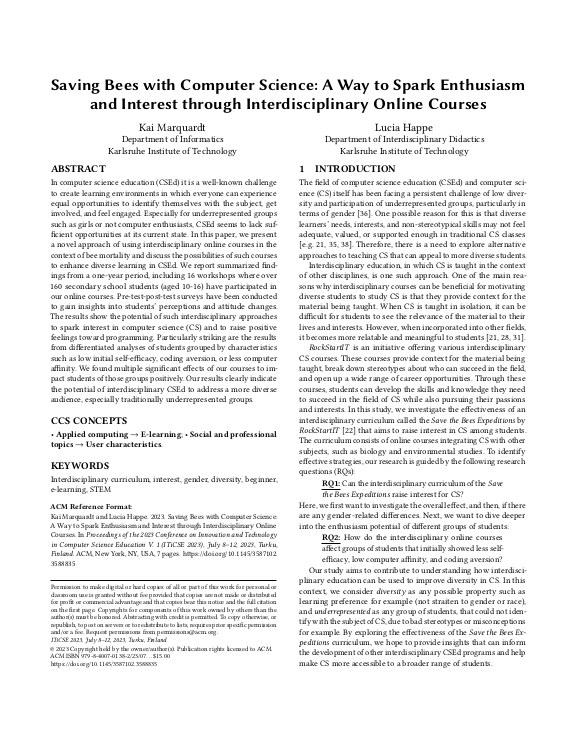How saving bees is helping kids fall in love with coding
What do bees and computer science have in common? More than you think and it might just be the secret to getting more kids excited about tech.
If you’ve ever watched a child light up while learning something new, you know how powerful the proper context can be. That’s the idea behind Save the Bees Expeditions, a groundbreaking series of online courses from the RockStartIT initiative. The twist? These aren’t your typical coding lessons. They’re biology-meets-technology adventures designed to make computer science (CS) click, especially for kids who think tech isn’t for them.
And guess what? It’s working.
The Buzz: What we did…
Over 160 students aged 10–16 joined us on a mission: to use tech to help save bees. Through six online courses, they explored how to build websites, analyse bee population data, and even train AI models to recognise bees. All with one goal: protect one of nature’s most essential (and endangered) creatures.
Each course tackled a different CS concept—from web development and databases to artificial intelligence and project planning—always wrapped in a real-world mission. Students didn’t just learn to code; they knew how to do something with code.
“We focused on purpose-driven learning,” explains Dr. Lucia Happe, one of the creators. “Kids weren’t just programming—they were solving a problem that matters.”
The results: not just more interest, but more confidence
The biggest surprise? It wasn’t just the self-declared tech lovers who thrived.
When we surveyed students before and after the courses, we found that even those who started out disliking coding or doubting their abilities showed dramatic improvements:
- Students with coding aversion reported significantly more positive feelings and substantial interest in CS afterwards.
- Kids with low self-efficacy—those who said “I’m not good at this”—gained confidence and showed greater belief in their CS potential.
- Even students with low computer use felt more positively toward coding after one workshop.
And it wasn’t just the numbers. One of the most powerful shifts we observed was girls’ preference for interdisciplinary learning. Many started the course unsure about combining biology and CS, but left loving it. That kind of mindset change is gold in a field struggling with diversity.
Why it works?
Traditional computer science classes can feel isolating, abstract, and, let’s face it, boring to many kids. Especially if they don’t already see themselves as “tech people.” The Save the Bees courses flipped that script by offering:
Context – Students weren’t coding for the sake of it, they were solving a real-world problem.
Purpose – The mission was clear and meaningful: help the bees, help the planet.
Storytelling – Each course had a narrative arc, engaging both dramatist and pattern-seeking learning styles.
Personal Growth – Students could choose their difficulty level and work independently, building confidence.
Our favourite insight? You don’t have to “like coding” to like CS
One of the most important takeaways: kids don’t have to fall in love with coding itself to develop an interest in computer science. When CS becomes a tool to pursue their interests—be it biology, sustainability, or Storytelling—they see the value and gain motivation.
This could be the key to broadening participation in tech, especially among groups traditionally excluded from the conversation.
Takeaway for educators & policymakers
Want more girls in tech? More diversity in your CS classrooms? Don’t just change who you invite – change how you invite. Build courses around real-world problems. Blend CS with other disciplines like biology or environmental science. Let kids experience tech as a means to an end, not the end itself.
As the study’s authors put it:
“By broadening the mental picture of what it means to be a computer scientist, we may attract more students and be more accurate about what CS truly is.”
Ready to rethink tech education?
Explore the full RockStartIT Save the Bees curriculum at rockstartit.com, and see how interdisciplinary, mission-driven learning could help your students find their place in tech, no matter where they’re starting from.
Because the future of computer science might start with a bee.
Ready to dive deeper?
The research paper titled “Saving Bees with Computer Science: A Way to Spark Enthusiasm and Interest through Interdisciplinary Online Courses” authored by Kai Marquardt and Lucia Happe, delves into the transformative potential of combining computer science with other fields.
by Kai Marquardt

